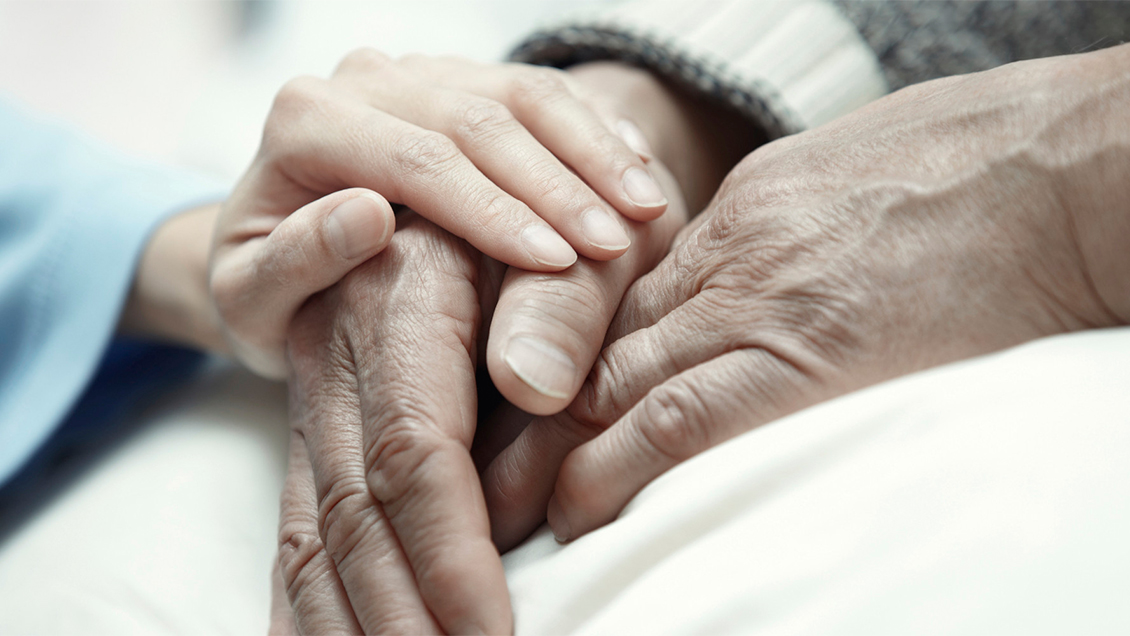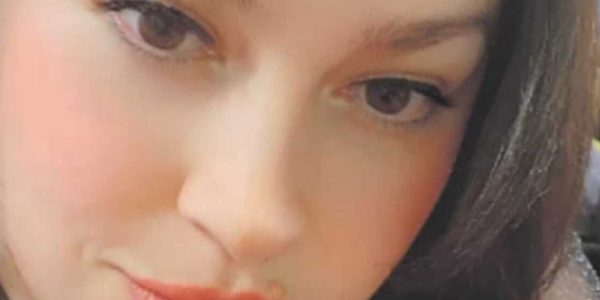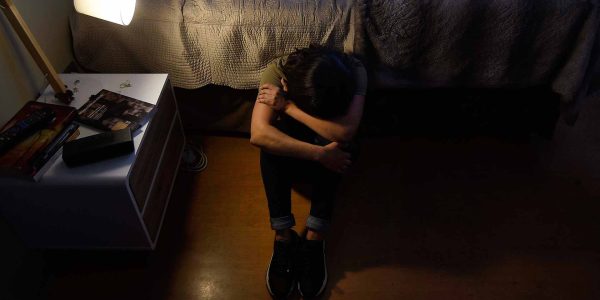“Esta fue, sin exageración, la mejor muerte que vi”: médico relata paso a paso cómo falleció su paciente gracias a la eutanasia
El facultativo canadiense conmovió a las redes sociales con su relato de "una buena muerte".

Mientras en Chile se discute la legalidad de la eutanasia o “muerte digna”, la comunidad científica sigue debatiendo hasta cuándo pueden los médicos tratar a un paciente terminal sin cura.
En las últimas horas se ha viralizado por las redes sociales el relato de David Juurlink, jefe he la división de Farmacología Clínica y Toxicología del Centro Sunnybrook Health Sciences de Toronto.
“Me gustaría compartir algunas reflexiones sobre la muerte de una paciente. He pensado bastante sobre ella. Ella Me dio consentimiento explícito de tuitear detalles de su caso, sobre las horas previas a su muerte. Su anhelo es que haya algún beneficio de su experiencia”, comenzó explicando el doctor.
I'd like to share some reflections on the death of a patient. I’ve thought about her a lot.
She gave me explicit consent to tweet the details of her case, about four hours before she died. Her hope was that someone might benefit from her experience.
/1
— David Juurlink (@DavidJuurlink) May 18, 2019
“Ella llegó al hospital como usualmente lo hacen los octogenarios: con debilidad generalizada, caídas, alimentación oral pobre, fiebre, hipotensión. Su conteo de glóbulos blancos (WBC) era de 17.000. Los cultivos sanguíneos crecieron E. Coli. Sépsis. Arreglable”, continuó.
She came to hospital as octogenarians often do: with generalized weakness, falls, poor oral intake, fever, hypotension.
Her WBC was 17,000. Blood cultures grew E. coli.
Sepsis. Fixable enough.
/2
— David Juurlink (@DavidJuurlink) May 18, 2019
El médico relató que su paciente “también se quejaba de un dolor en su ingle y muslo. Era nuevo, progresivo y debilitante. Incluso moverse en la cama del hospital era agonizante”.
But she also complained of pain in her groin and thigh. It was new, progressive and debilitating.
Even moving around in her hospital bed was agonizing.
/3
— David Juurlink (@DavidJuurlink) May 18, 2019
“Un mes antes, le habían encontrado un gran pseudoaneurisma surgiendo de su arteria ilíaca externa (y sí, eso es un error de un previo reemplazo de cadera atravesándolo). Se sometió a stent y retornó a casa”, sigue el relato.
A month earlier, she’d been found to have a large pseudoaneurysm arising from her external iliac artery.
(And yes, that’s a screw from a previous hip replacement traversing it.)
She underwent stenting and returned home.
— David Juurlink (@DavidJuurlink) May 18, 2019
“Debido a que era séptica y tenía dolor, la examinamos de nuevo. La nueva TC mostró un extenso gas dentro del pseudoaneurisma. Ahora estaba infectado, y eso era un gran problema”, contó el doctor.
Because she was septic and in pain, we scanned her again. The new CT showed extensive gas within the pseudoaneurysm.
It was now infected, and that was a big problem.
— David Juurlink (@DavidJuurlink) May 18, 2019
El profesional indicó que “continuamos con antibióticos. Mejoró. Dejamos su dolor bajo un control razonable con hidromorfona y otras varias medicinas. Pero llegó la gran pregunta: ‘¿ahora qué?”.
We continued antibiotics. She improved. We got her pain under reasonable control with hydromorphone and various other meds.
But then came the big question: “Now what?”
/6
— David Juurlink (@DavidJuurlink) May 18, 2019
“No quería más cirugía. Su cabeza no era ágil, y estaba clara de ello. Pero los antibióticos solos no iban a curar la infección; sólo la iban a suprimir. La mejor opción, sugerimos, eran antibióticos por el resto de su vida”, explicó.
She wanted no more surgery. Her mind was now sharp, and she was clear about that.
But antibiotics alone weren’t going to cure the infection; they would only suppress it.
The best option, we suggested, would be antibiotics for the rest of her life.
/7
— David Juurlink (@DavidJuurlink) May 18, 2019
“Discutimos esta opción en largo. Ella no la quería tampoco. Ella explicó por qué. El dolor era una razón. Las medicinas ayudaban un poco, mientras ella no se moviera demasiado. Pero nuestra opción de drogas eran limitadas, y el dolor iba a ser un problema persistente”, dijo Juurlink.
We discussed this option at length. She didn’t want it either. She explained why.
Pain was one reason. Meds helped a little, as long as she didn’t move around much. But our drug options were limited, and pain was going to be a persistent problem./8
— David Juurlink (@DavidJuurlink) May 18, 2019
Según el doctor, “su mayor preocupación, mirando a futuro, era su calidad de vida. A los meses venideros, ella perdió su movilidad e independencia. Ella no las recuperaría y lo sabía”.
Her even greater concern, looking forward, was quality of life.
Over the preceding months, she’d lost her mobility and independence. She wasn’t going to get them back and she knew it.
/9
— David Juurlink (@DavidJuurlink) May 18, 2019
“Previó estaría confinada a su departamento, con dolor, luchando con su andador. No más paseos afuera. No más viajes al almacén. No más juegos de bridge con sus amigas, como había hecho durante años. Ella no estaba interesada en vivir así”, siguió contacto el facultativo.
She foresaw being confined to her apartment, in pain, struggling with her walker.
No more walks outside. No trips to the grocery store. No playing bridge with her friends, as she had done for years.
She wasn’t interested in living like that.
/10
— David Juurlink (@DavidJuurlink) May 18, 2019
“Discutimos un cuidado paliativo: parar con los antibióticos, subir los medicamentos para el dolor, y y mantenerla cómoda mientras la infección tomaba su curso. Su familia la vigilaría a su lado por el tiempo que fuera necesario. Ella no estaba interesada en morir así”, explicó.
We discussed palliative care: stopping antibiotics, increasing her pain meds, and keeping her comfortable while the infection took its course. Her family would keep vigil at her bedside for as long as it took.
She wasn’t interested in dying like that.
/11
— David Juurlink (@DavidJuurlink) May 18, 2019
De acuerdo a Juurlink, “ella sabía que se estaba acercando al fin de su vida. Lo que ella quería, nos contó, era terminarla en paz, con su mente aún ágil, y con su familia y amigos presente. Ella quería asistencia médica para morir (MAiD)”.
She knew she was nearing the end of her life. What she wanted, she told us, was for it to end peacefully, with her mind still sharp, and her family and friends present. She wanted medical assistance in dying (MAiD).
/12
— David Juurlink (@DavidJuurlink) May 18, 2019
“Tuvimos una reunión familiar. Parientes vinieron desde lejos. Ellos apoyaron incondicionalmente. Resultó que, ella había discutido la posibilidad de MAiD, que sería una opción, varias veces en años recientes. Así que este fue el plan”, agregó el doctor.
We held a family meeting. Relatives came from near and far.
They were unconditionally supportive. As it turned out, she’d discussed the prospect of MAiD, were it ever to become an option, several times in recent years.
So that became the plan.
/13
— David Juurlink (@DavidJuurlink) May 18, 2019
“La vi todos los días después de eso. Manejé su dolor. Escuché sus historias. Aprendí sobre miembros de su familia que murieron y que cuyas muertes influyeron a su decisión. Nunca jamás reconsideró. Creció cariño en mi por ella, sobre todo con su lúcido estoicismo”, continúa el hilo.
I saw her every day after that. Managed her pain. Listened to her stories. Learned about family members who’d died, and whose deaths had influenced her decision now.
Never once did she reconsider. I grew very fond of her, especially her wit and clear-eyed stoicism.
/14
— David Juurlink (@DavidJuurlink) May 18, 2019
“Luego del período obligatorio de espera y las evaluaciones médicas, llegó el día. La visité a as 7:30 esa mañana. Ella estaba sola pero alegre, comiendo Cheerios y tostadas de su bandeja (todavía me arrepiento que esa fuera su última comida. Me hubiera gustado llevarle un beagle fresco con salmón)”, relató el médico.
After the requisite waiting period and medical assessments, the day had come.
I visited her at 7:30 that morning. She was alone but upbeat, eating Cheerios and toast from her tray.
(I still regret that this was her last meal. Wish I’d brought her a fresh bagel with lox.)
/15
— David Juurlink (@DavidJuurlink) May 18, 2019
Agregó: “Unas pocas horas después, su habitación estaba llena con familiares y amigos. Era literalmente una fiesta: Había conversación y risas y cognac en pequeñas tazas. El ánimo era de todo menos fúnebre. Se juntaron en su cama. Tomé una foto del grupo. Todos estaban sonriendo”.
A few hours later, her room was packed with family and friends. It was literally a party.
There was talking and laughing and cognac in Dixie cups. The mood was anything but funereal.
They gathered around her bed. I took a group photo. Everyone was smiling.
/16
— David Juurlink (@DavidJuurlink) May 18, 2019
“Luego miré como mis colegas revisaban todo por una última vez, confirmado su deseo, explicaron que pasaría, y contestaron las preguntas de todos. ‘Ok, estoy lista’, dijo. Su compostura era destacable. ‘Adiós. Gracias por todo. Los amo'”, relató.
I then watched as a colleague reviewed everything one last time, confirmed her wishes, explained what would happen, and answered everyone’s questions.
“Okay, I’m ready,” she said. Her composure was remarkable.
“Goodbye everyone. Thank you for everything. I love you all.”
/17
— David Juurlink (@DavidJuurlink) May 18, 2019
El médico explicó que su paciente “recibió midazolam y durmió paz, sus hijos tomándola de la mano y acariciando su cabeza. Luego vino el propofol, un anestésico. Luego rocuronio, un relajante muscular. Finalmente, cloruro de potasio, para detener su corazón. Cinco minutos después de decir adiós, ella estaba muerta”.
She received midazolam and dozed off peacefully, her children holding her hands and stroking her head.
Next came propofol, an anaesthetic.
Then rocuronium, a muscle relaxant.
Finally, potassium chloride, to stop her heart.Five minutes after saying goodbye, she was dead.
/18
— David Juurlink (@DavidJuurlink) May 18, 2019
“Hubo lágrimas, por supuesto. Por todos lados. Pero mayormente la atmósfera en la habitación era de serenidad y gratitud, y un genuino sentimiento de haber hecho lo correcto”, afirmó el doctor.
There were tears, of course. All around. But mostly the atmosphere in the room was one of serenity and gratitude, and a genuine sense of having done the right thing.
/19
— David Juurlink (@DavidJuurlink) May 18, 2019
“No soy experto en MAiD, y entiendo que algunas personas se oponen por varias razones. Pero he sido un doctor por 25 años, y he visto suficientes muertes para saber una buena de una mala. Esta fue, sin exageración, la mejor muerte que he presenciado”, aseguró.
I’m no MAiD expert, and I get that some people are opposed to it for various reasons. But I’ve been a doctor for 25 years, and I’ve seen enough deaths to know a good one from a bad one.
This was, without exaggeration, the best death I have ever witnessed.
/20
— David Juurlink (@DavidJuurlink) May 18, 2019
El hilo concluye: “Todos morimos eventualmente. Este paciente me ayudó a a darme cuenta de que cuando llegue mi hora, seré afortunado si MAiD es una opción. Y siempre estaré agradecido de ella, su familia, y a mis expertos colegas por apreciar lo bueno que una ‘buena muerte’ puede ser”.
We all die eventually. This patient helped me realize that when my time comes, I'll be fortunate if MAiD is an option.
And I will always be thankful to her, her family, and a very skilled colleague for helping me appreciate just how good a “good death” can be.
/ end
— David Juurlink (@DavidJuurlink) May 18, 2019














